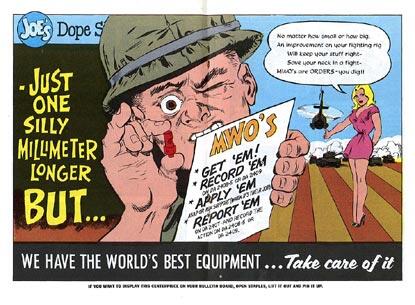
March 9, 2010
From Macabre to Winsome to Nostalgic, VCU’s Digital Collections House History
Share this story
Virginia Commonwealth University Libraries’ Digital Collections contain the usual historical photographs and documents one would expect to find in a library archive, but there are some surprises as well.
Take for instance the Medical Artifacts Collection, part of the Libraries Special Collections housed in the Tompkins-McCaw Library. The physical collection comprises more than 6,000 pieces dating back to the 1800s. The digital collection provides an in-depth look at 167 of these objects, including an amputation and surgical set, a bladder syringe and a stomach pump, all of which look more like medieval torture devices than the tools of healers. Accompanying each photo is a painstakingly researched, detailed description of physical and historical attributes.
“The time it takes to write a lot of description can really slow you down,” said Sam Byrd, digital repository librarian. But it was time well spent because of the desire to make this rare collection more accessible. Jodi L. Koste, archivist and head of resources and operations, noted that before archiving them online, there was no easy access to the artifacts.
Another of the digital collections — the PS Magazine collection — is on the opposite end of the spectrum from gruesome surgical devices. The whimsical publication was a real coup for the university.
The magazine, aka Preventive Maintenance Monthly, was an official monthly Army maintenance publication from 1951 to 1971. What makes it of interest to VCU isn’t the subject matter, but the publication’s connection to the art world: It was drawn by acclaimed comic book artist Will Eisner.
Known as the father of the graphic novel, Eisner has one of the comic industry's most prestigious awards, The Eisner Award, named after him. In 2006, the university’s association with the great artist was solidified when administrators of the Will Eisner Comic Industry Awards donated its archives to VCU. The special collection comprises all works that have been nominated for Eisner Awards since 1992 as well as all future nominated books and comics.
VCU Libraries came into the complete collection of PS Magazines rather serendipitously. It had only a handful of the magazines, which it posted online as part of the collection of Eisner’s works. The right person saw it, Byrd recalled: “After we posted it, a guy in the Army sent us the rest so we have a complete collection.”
The digital repository staff usually has a few projects in the works at any given time. Their current project will be of special interest to alumni: the digitization of each issue of the student-run Commonwealth Times, from its first issue dating back to 1969.
“What we focus on is things we think will be relevant to the VCU community,” Byrd said.
Other more traditional collections include more than 7,000 images of Richmond from the ’70s to present day; sound files comprising the VCU Oral History Archive and the Carver-VCU Partnership Oral History Collection; and the Wayne Commission Report, the 1967 report that led to the establishment of VCU.
The Richmond vintage postcards collection, one of the earliest collections to be digitized, is also one of the more interesting ones, said Koste, because it provides a rarely seen look at a Richmond of long ago.
“Before this incarnation, we had a number of photographs of postcards on the Web site. But now, you can select favorites or do a slideshow. None of that was available with the static Web pages,” Koste said.
Indeed, Byrd said, before the Digital Collections launched in 2006, there were some scattered collections on the various VCU pages, but none were as comprehensive.
“In general, libraries have been diving into the world of digitization — not just photos but text,” Byrd said. “Traditionally actual photos were stored. You’d have to physically go to the building. Research with photographs has traditionally been not difficult, but you have to do a lot of digging.
“Distribution of photographs is one of the huge benefits of the Internet.”
Today, materials from Special Collections and Archives are available for viewing at the click of a mouse. Collections are presented in a variety of formats, from photos and text to audio and video files.
“The range of materials available is remarkable,” Koste said.
Subscribe to VCU News
Subscribe to VCU News at newsletter.vcu.edu and receive a selection of stories, videos, photos, news clips and event listings in your inbox.









